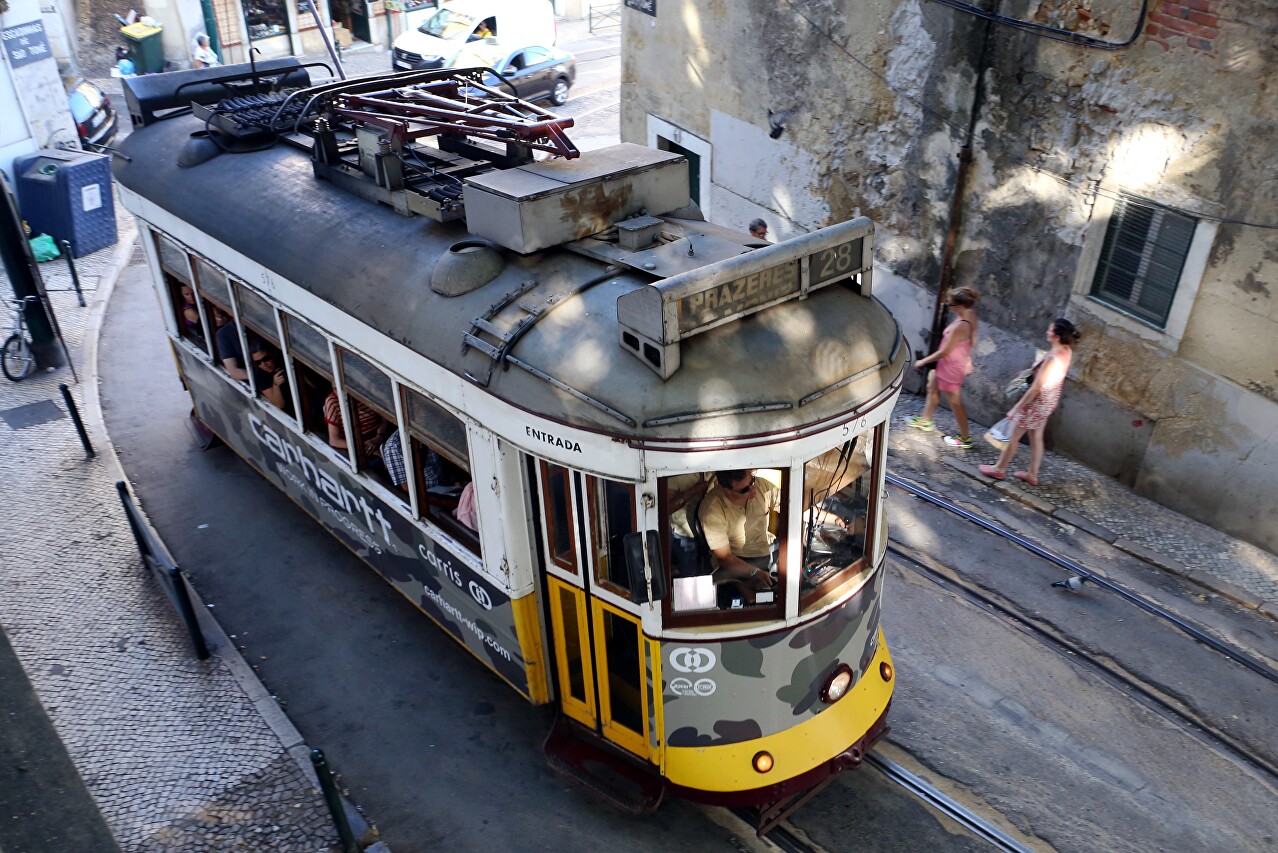Santa Luzia Сhurch
In the heart of Alfama is one of the oldest in Lisbon the church of Santa Luzia (Igreja de Santa Luzia on the map). It was founded in the 12th century during the reign of Afonso Henriques in an old Moorish fortification, and served as a strong point protecting the eastern border of the city. This building was destroyed by the earthquake of 1755, and what we see now was built at the end of the 18th century by the architect Mateus Vicente de Oliveira. The church is a national monument and now belongs to the Assembly of the Order of Malta, as evidenced by the Maltese cross over the entrance, but it is not known for certain whether the Hospitallers (as the Maltese were originally called) were involved in its foundation.
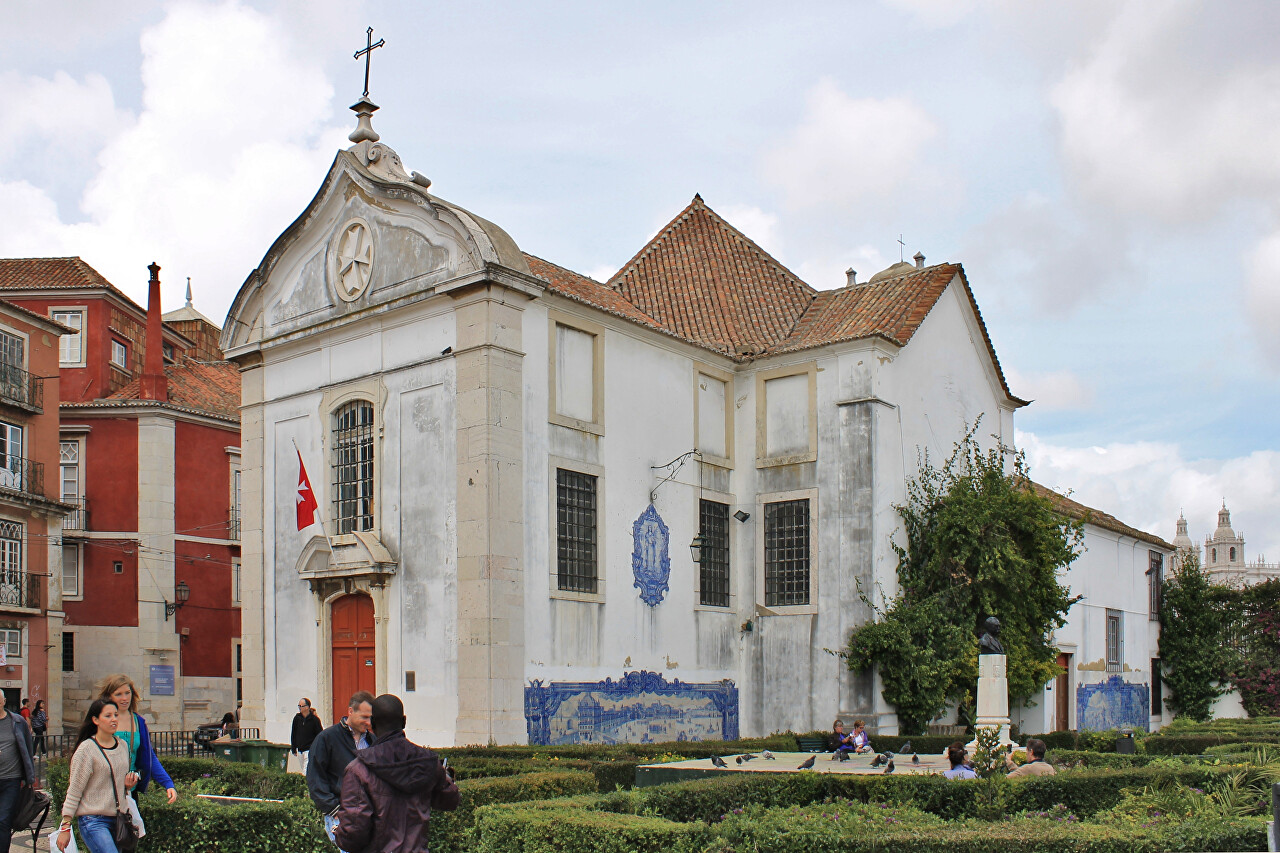
The church is built in the Baroque style and has the shape of a Latin cross in the plan, inside there are 10 tombstones with inscriptions in Portuguese or Latin. The facade, facing the Tagus River, is decorated with azuleijo tile panels made at the Viúva de Lamego factory. The upper panel depicts the first Christian martyr Saint Lusia of Syracuse (Lucia Syracusana). According to legend, her eyes were torn out, so she is considered the patroness of the blind.
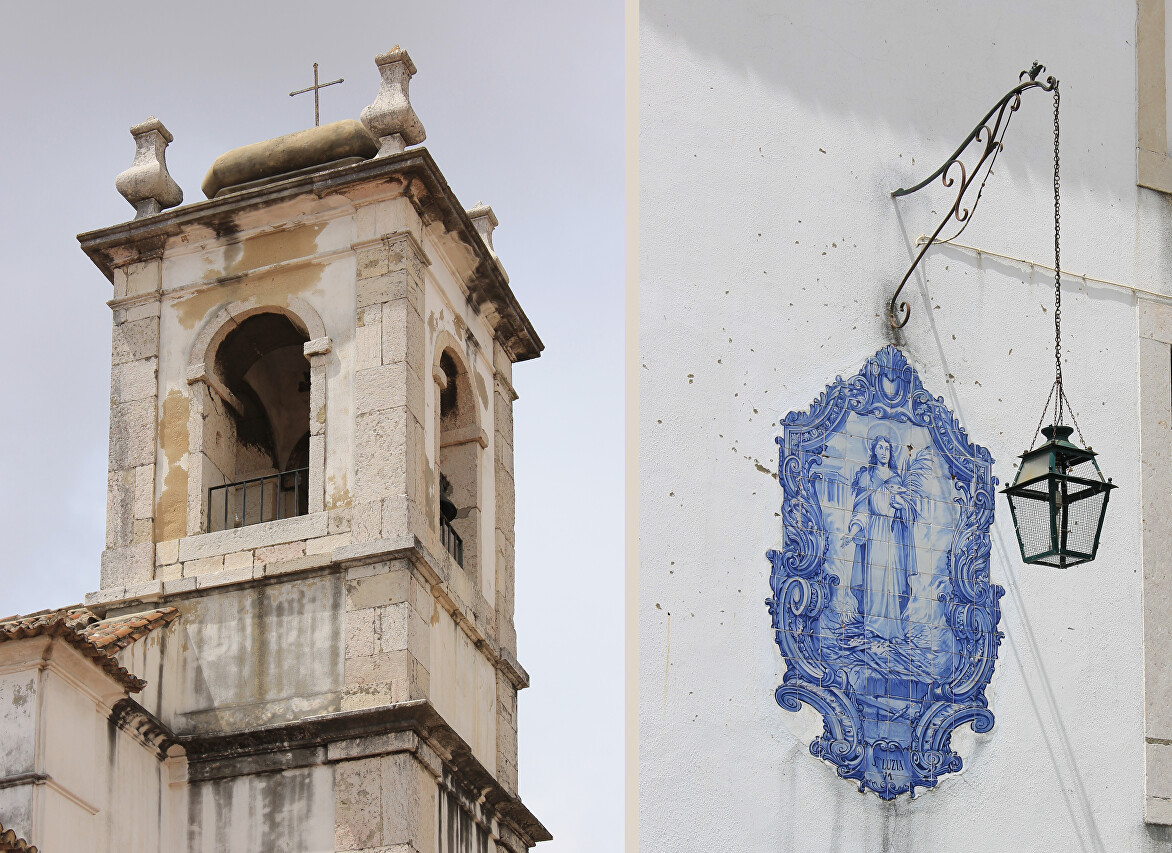
The lower right panel depicts the storming of the Castle of St. George by the troops of Alfonso Henriques in 1147. It is worth noting that a significant part of the Portuguese army was made up of Crusader knights, so the hypothesis of the foundation of the church by hospitallers is quite plausible. The second painting of ceramic tiles shows the panorama of Praza do Comercio before the earthquake.
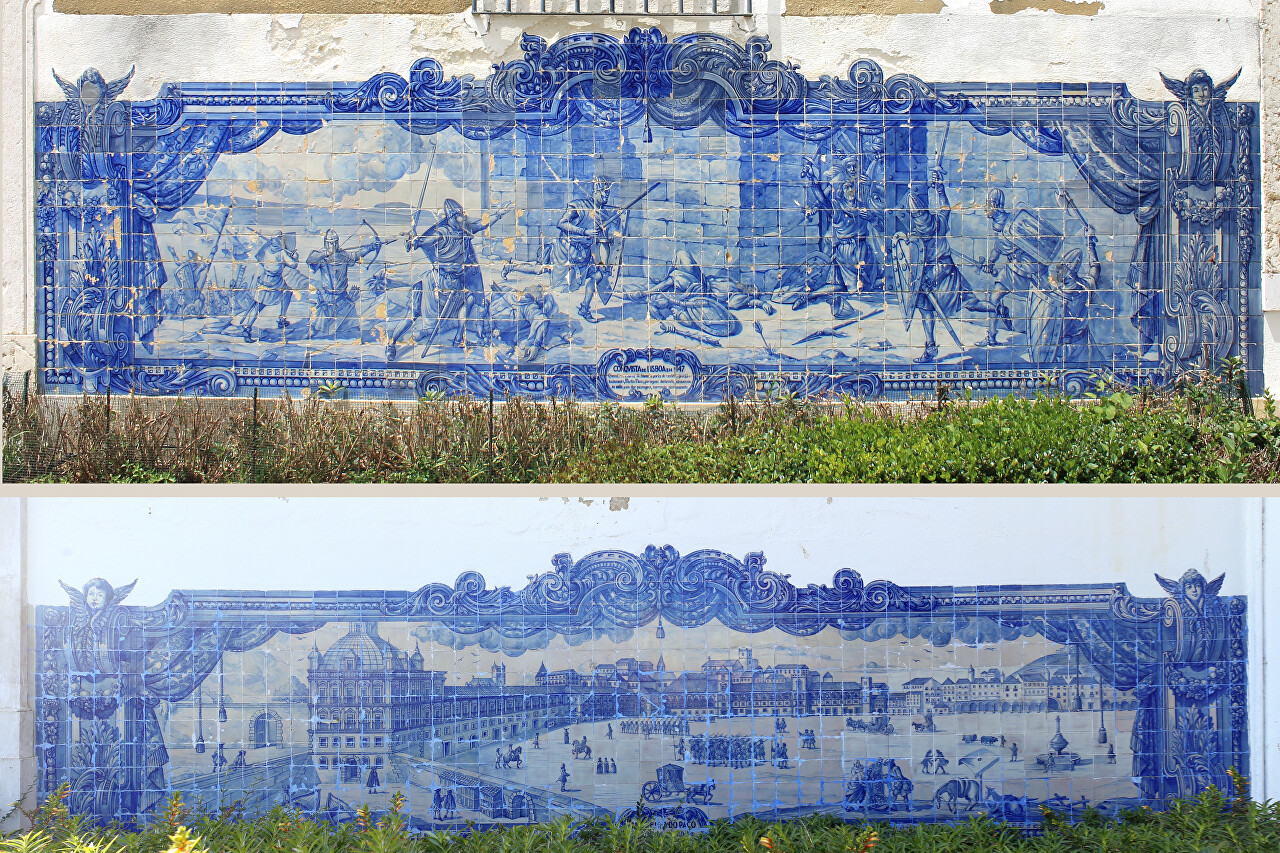
On the opposite side of the church there is another panel that appeared here in 1980 on the initiative of the Rotary Club, it shows a map of the area with a tourist route through its historical part.
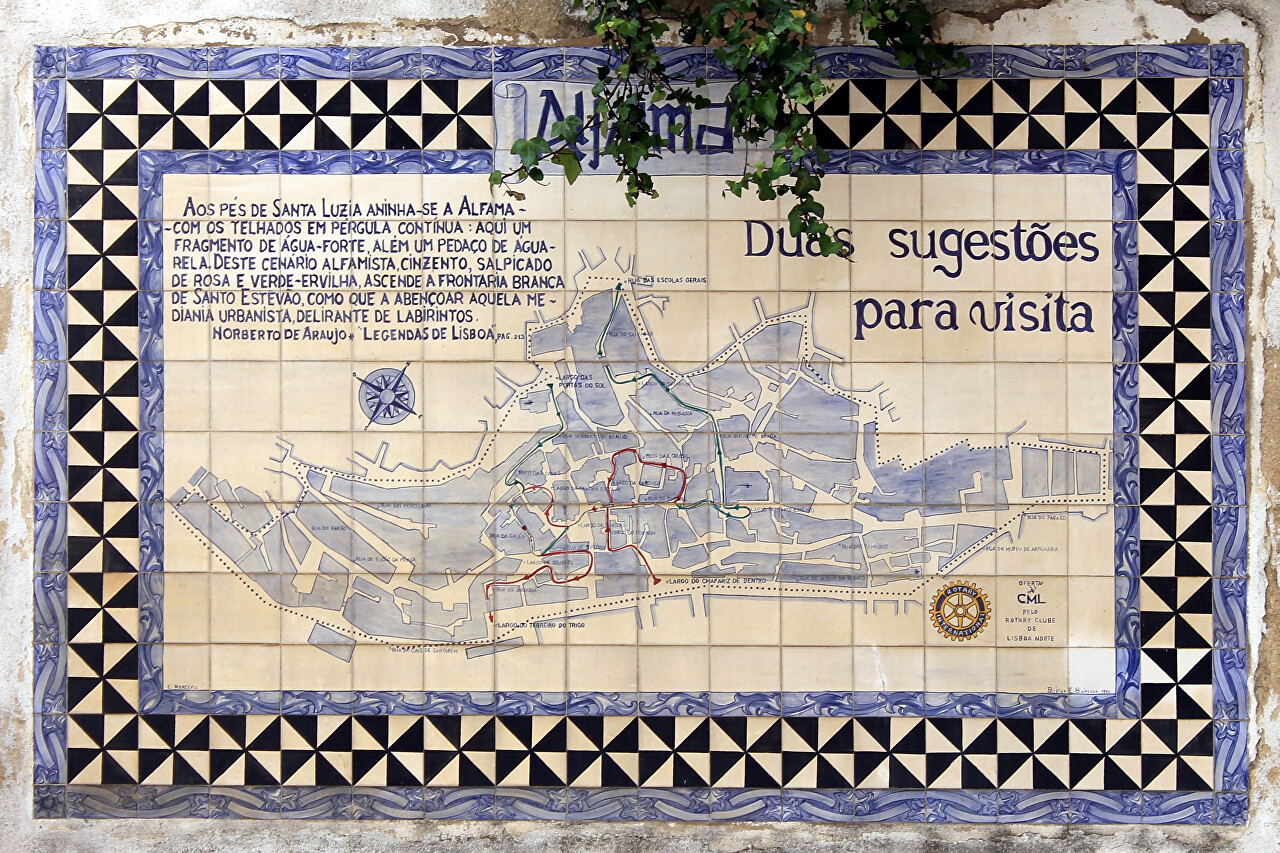
On the river side, under the walls of the church, there is a small garden. This beautiful flower garden is often called "Miradoro Santa Luzia".

However, officially the garden is named after the poet, historian and publicist Júlio de Castilho (Jardim Júlio de Castilho). His bronze bust by sculptor Costa Mota was installed on July 25, 1929.
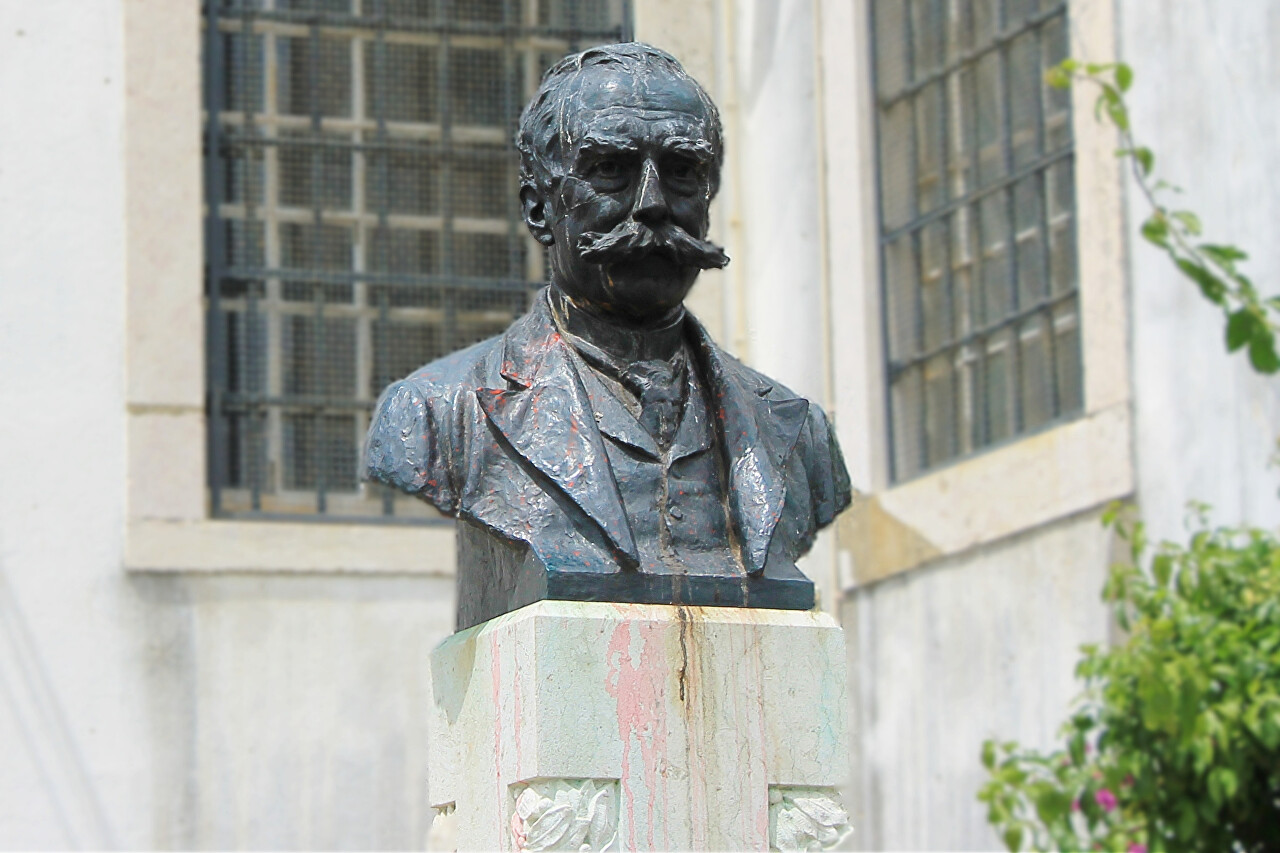
The park offers a wonderful view of the lower part of the Alfama quarter and the vast expanses of the Tagus River.
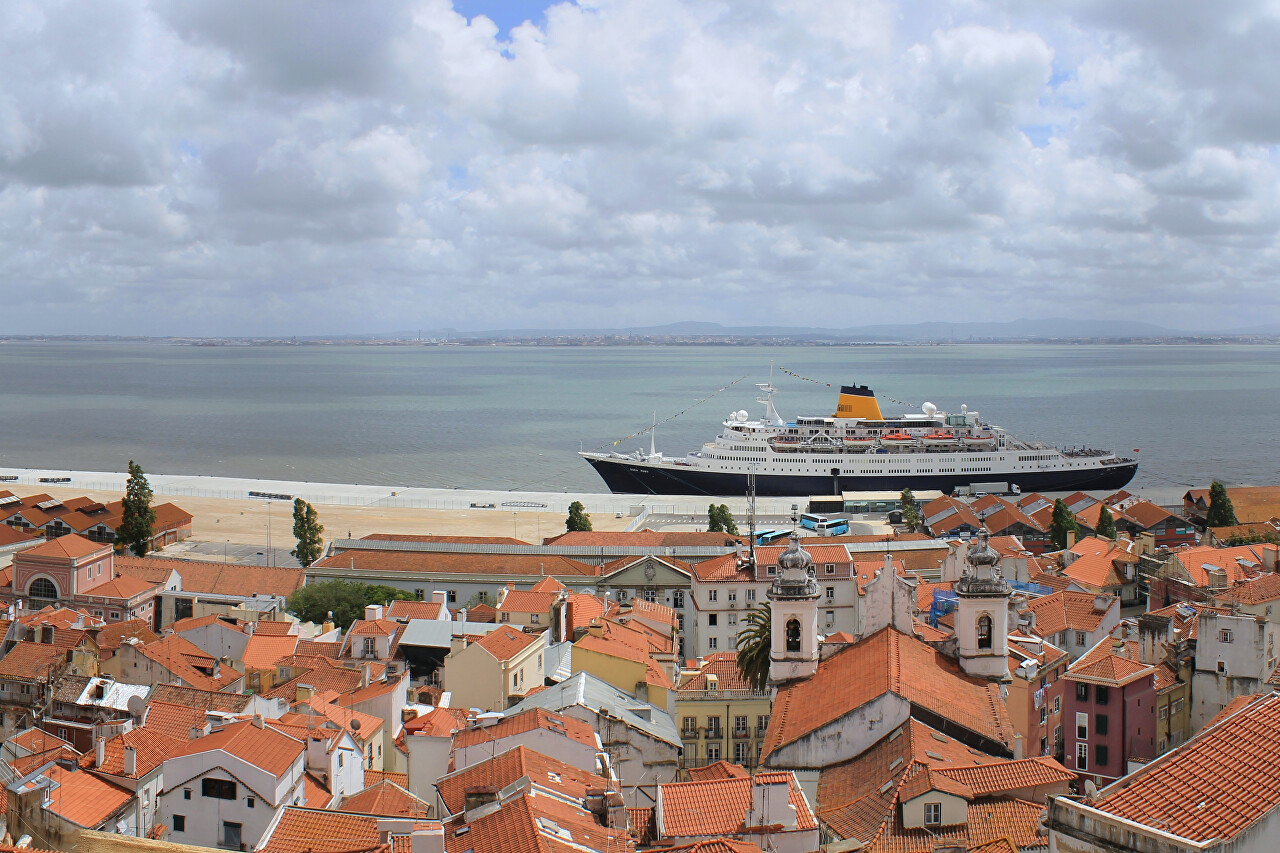
Nearby there is a stop of trams No. 12 and No. 28, called Miradoro Santa Luzia.
